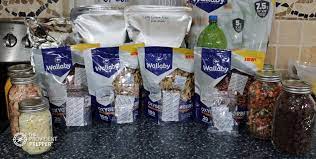
Breaking News
 Six men are making AI decisions for 8 billion people
Six men are making AI decisions for 8 billion people
 Making a Killing: FULL DOCUMENTARY FILM
Making a Killing: FULL DOCUMENTARY FILM
 Rockefeller Foundation Partners With MrBeast To Target Youth With "Next-Gen" Propaganda
Rockefeller Foundation Partners With MrBeast To Target Youth With "Next-Gen" Propaganda
Top Tech News
 Build a Greenhouse HEATER that Lasts 10-15 DAYS!
Build a Greenhouse HEATER that Lasts 10-15 DAYS!
 Look at the genius idea he came up with using this tank that nobody wanted
Look at the genius idea he came up with using this tank that nobody wanted
 Latest Comet 3I Atlas Anomolies Like the Impossible 600,000 Mile Long Sunward Tail
Latest Comet 3I Atlas Anomolies Like the Impossible 600,000 Mile Long Sunward Tail
 Tesla Just Opened Its Biggest Supercharger Station Ever--And It's Powered By Solar And Batteries
Tesla Just Opened Its Biggest Supercharger Station Ever--And It's Powered By Solar And Batteries
 Your body already knows how to regrow limbs. We just haven't figured out how to turn it on yet.
Your body already knows how to regrow limbs. We just haven't figured out how to turn it on yet.
 We've wiretapped the gut-brain hotline to decode signals driving disease
We've wiretapped the gut-brain hotline to decode signals driving disease
 3D-printable concrete alternative hardens in three days, not four weeks
3D-printable concrete alternative hardens in three days, not four weeks
 Could satellite-beaming planes and airships make SpaceX's Starlink obsolete?
Could satellite-beaming planes and airships make SpaceX's Starlink obsolete?
The Do's and Don'ts – Foods Not To Use Oxygen Absorbers With

Understanding the limitations of using an oxygen absorber is a must-have skill for anyone serious about food storage and safety. Misusing them could lead to spoiled food, wasted resources, and even health risks like food poisoning. So, let's delve into the mystery of oxygen absorbers and discover which foods not to use oxygen absorbers with.
What Exactly Are Oxygen Absorbers?
The Oxygen absorber will play a crucial role in prolonging the shelf life of food and preserving its quality. They are typically small packets or sachets that contain iron powder, salt, or activated carbon. When included in food packaging, these absorbers actively remove the oxygen present in the package, creating an anaerobic environment.
The science behind oxygen absorbers is rooted in a chemical reaction known as oxidation. The primary component within oxygen absorbers is iron powder. Oxygen molecules in the packaging environment react with the iron to form iron oxide. This reaction creates a vacuum-like effect, depleting oxygen levels within the package.

 Defend yourself like a pro
Defend yourself like a pro First totally synthetic human brain model has been realized
First totally synthetic human brain model has been realized Mach-23 potato gun to shoot satellites into space
Mach-23 potato gun to shoot satellites into space

